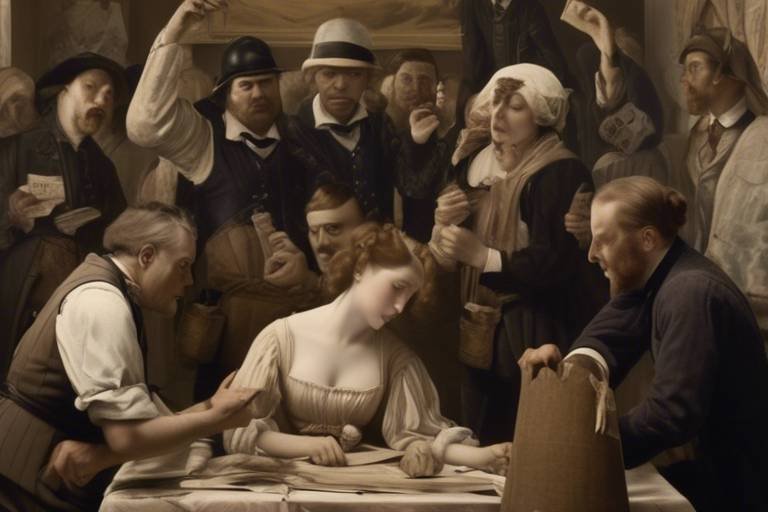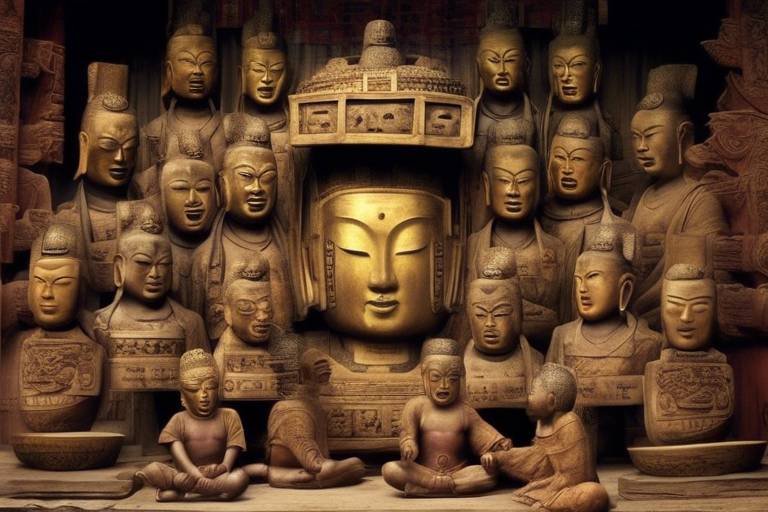The Role of the Sun and Moon in Ancient Cosmologies
Exploring the significance of the sun and moon in ancient belief systems and cosmologies reveals a profound understanding of these celestial bodies beyond their physical presence. Ancient civilizations, such as the Egyptians and Aztecs, held the sun in high regard, worshipping it as a powerful deity that symbolized life, warmth, and vitality. The sun's daily journey across the sky influenced religious rituals, architectural designs, and societal structures, shaping the very fabric of these ancient cultures.
On the other hand, the moon held a different yet equally important role in ancient cosmologies. Its waxing and waning cycles were intricately linked to concepts of fertility, the rhythms of nature, and the divine feminine. Across various mythologies, the moon was revered as a symbol of renewal, transformation, and the cyclical nature of existence, embodying both light and shadow, creation and destruction.
Ancient civilizations developed sophisticated solar and lunar calendars to track time, predict seasonal changes, and organize religious festivals. The alignment of these calendars with celestial events not only facilitated agricultural practices but also deepened the connection between the earthly realm and the cosmic order. The intricate dance of the sun and moon in the sky mirrored the balance and harmony sought by these ancient cultures in their quest for cosmic understanding.
Mythological narratives surrounding the sun and moon wove intricate tales of creation, destruction, and rebirth, personifying these celestial bodies as divine beings with immense power and influence. These stories served not only as explanations for natural phenomena but also as moral lessons and cultural touchstones, shaping the collective consciousness of ancient societies.
Architectural marvels, such as temples and monuments, were often aligned with the movements of the sun and moon, showcasing the advanced astronomical knowledge and spiritual significance of these ancient civilizations. The precision with which these structures were built to capture specific celestial events highlights the deep reverence and awe with which the sun and moon were regarded.
The legacy of ancient cosmologies reverberates through modern astronomy, astrology, and spiritual practices, underscoring the enduring fascination with the sun and moon as celestial symbols of light, darkness, and the eternal cycles of life. As we gaze upon the same sun and moon that captivated our ancestors millennia ago, we are reminded of the timeless connection between humanity and the cosmos.

Ancient Sun Worship
Ancient Sun Worship delves into the reverence and adoration that various ancient civilizations held for the sun, viewing it not merely as a celestial body but as a powerful deity embodying life-giving energy and divine power. Cultures such as the Egyptians, with their worship of Ra, the sun god, and the Aztecs, who revered Huitzilopochtli, the sun god of war, placed the sun at the center of their religious beliefs and practices. The sun's daily journey across the sky, its warmth, and its role in sustaining life on Earth were all seen as manifestations of a higher power deserving of worship and sacrifice.
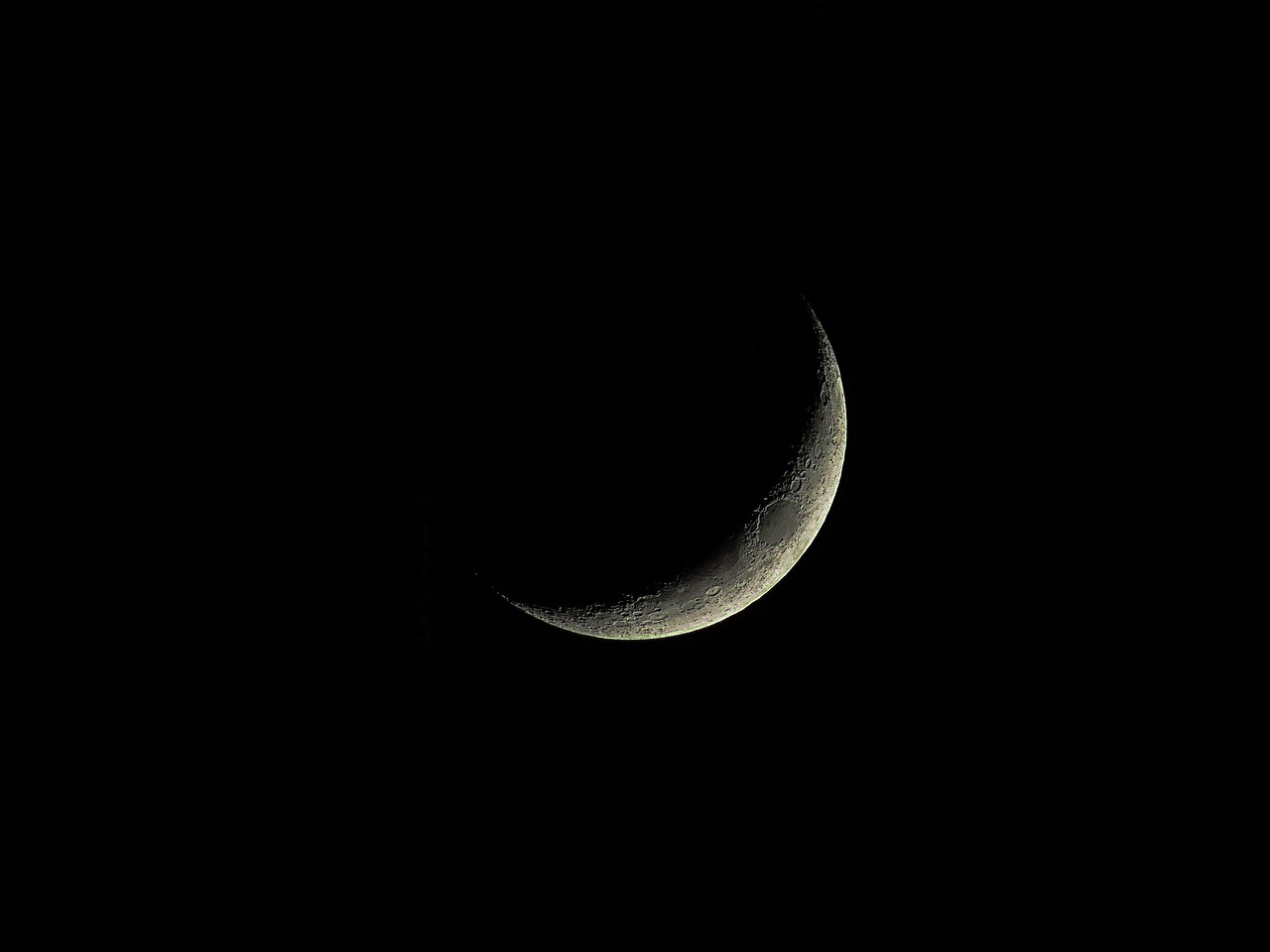
Lunar Symbolism
When delving into the realm of ancient cosmologies, one cannot overlook the profound that permeated various cultures throughout history. The moon, with its mystical allure and ever-changing phases, held a significant place in the belief systems of ancient civilizations, serving as a symbol of fertility, rebirth, and the divine feminine.
Across different mythologies and traditions, the moon was often associated with the cycles of life, mirroring the waxing and waning of the lunar orb to the ebb and flow of existence itself. In the cosmic dance of creation and destruction, the moon stood as a silent witness to the eternal rhythm of nature, guiding humanity through the darkness of night towards the dawn of a new day.
Moreover, the moon's connection to the feminine aspect of divinity was a prevalent theme in ancient cultures, where lunar goddesses embodied the nurturing and intuitive qualities attributed to the moon. From the Greek goddess Artemis to the Mesopotamian deity Sin, the moon was revered as a symbol of nurturing and emotional depth, reflecting the profound influence of lunar symbolism on spiritual practices and societal values.
Furthermore, the moon's association with the tides and the menstrual cycle underscored its role as a symbol of renewal and transformation, highlighting the interconnectedness of life, death, and rebirth in the grand tapestry of existence. As ancient cultures gazed up at the night sky, they saw in the moon a reflection of their own journey through the cycles of birth, growth, decay, and regeneration.
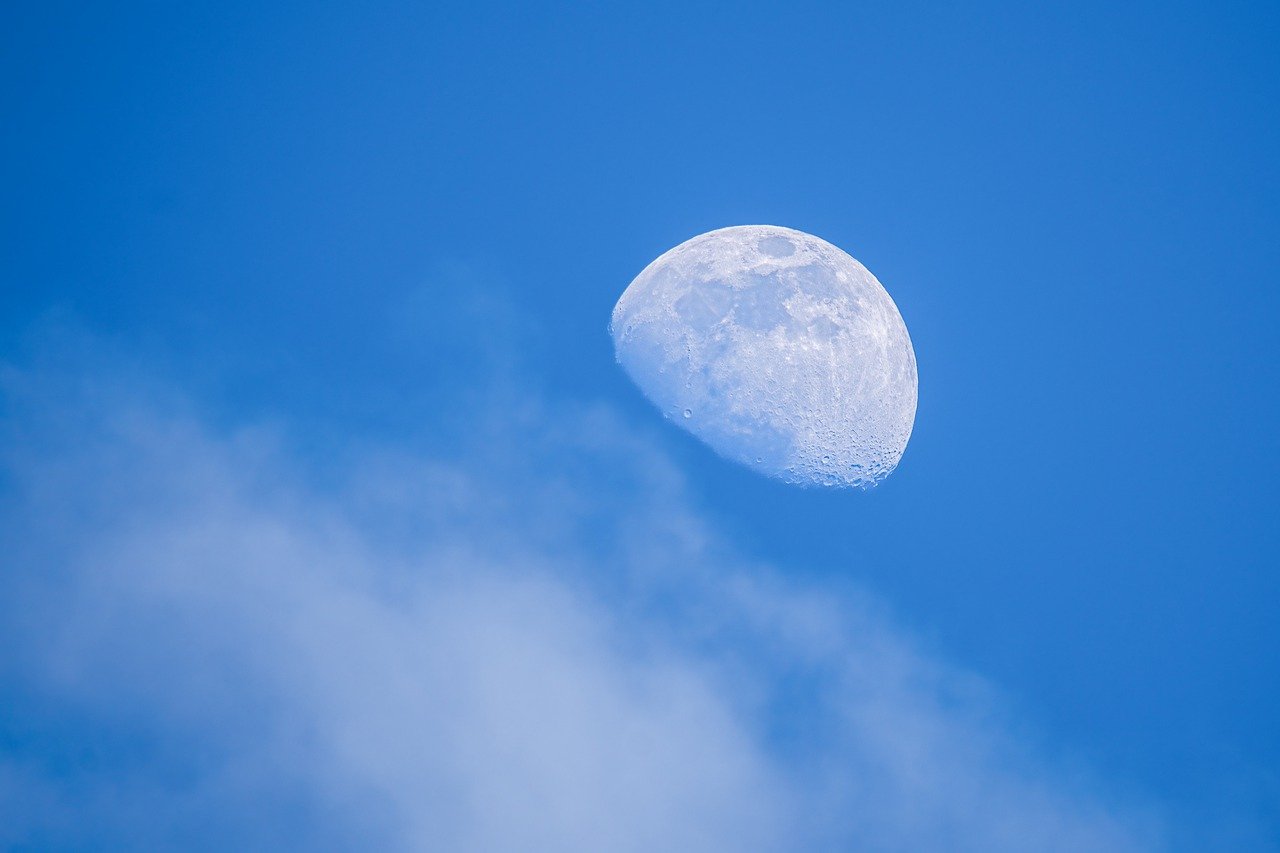
Solar and Lunar Calendars
Ancient civilizations were deeply connected to the movements of the sun and moon, leading to the development of solar and lunar calendars that played a crucial role in their daily lives. The solar calendar, based on the sun's position, helped track the changing seasons and agricultural cycles, guiding planting and harvesting activities. On the other hand, the lunar calendar, synchronized with the phases of the moon, was essential for religious festivals and rituals that aligned with lunar cycles.
One fascinating aspect of ancient solar calendars was their precision in predicting celestial events such as solstices and equinoxes, which were significant for agricultural planning and religious ceremonies. The Egyptians, for instance, closely monitored the sun's movements to determine the annual flooding of the Nile River, a vital event for their agricultural prosperity. Similarly, the Mayans developed a sophisticated solar calendar that accurately calculated the length of a solar year, showcasing their advanced mathematical and astronomical knowledge.
Conversely, lunar calendars were intricately linked to the concept of time and the cyclical nature of life. In many ancient cultures, the moon symbolized fertility and the rhythm of birth, growth, and decay. The lunar phases were also associated with the divine feminine and goddess worship, highlighting the moon's influence on cultural practices and religious beliefs.
Moreover, the interplay between solar and lunar calendars reflected the harmonious balance sought by ancient civilizations in understanding the cosmos. By integrating both solar and lunar cycles into their calendars, they acknowledged the dualistic forces of light and darkness, order and chaos, and the interconnectedness of all life forms within the cosmic dance of time.
Overall, the development of solar and lunar calendars by ancient cultures not only served practical purposes in timekeeping and agriculture but also reflected their profound spiritual connection to the celestial bodies. These calendars were not just tools for measuring time but symbols of the intricate relationship between humanity and the cosmos, embodying the eternal rhythm of the sun and moon in the tapestry of existence.

Cosmic Harmony and Balance
In ancient cosmologies, the concept of cosmic harmony and balance played a central role in shaping beliefs and practices. The sun and moon were often viewed as complementary forces representing fundamental dualities such as light and darkness, order and chaos, and the cyclical nature of existence. This harmony between the sun and moon was not only seen as essential for the well-being of the cosmos but also reflected in the societal structures and religious rituals of ancient civilizations.
Ancient cultures believed that maintaining balance between the sun and moon was crucial for ensuring prosperity, fertility, and spiritual enlightenment. The rhythmic dance of the sun and moon across the sky symbolized the eternal cycle of life, death, and rebirth, mirroring the interconnectedness of all living beings with the cosmos.
Moreover, the alignment of celestial bodies was intricately linked to the concept of cosmic harmony. Ancient astronomers and priests meticulously observed the movements of the sun and moon, charting their paths through the heavens to predict seasonal changes, agricultural cycles, and auspicious times for religious ceremonies.
This profound understanding of celestial mechanics not only allowed ancient civilizations to develop sophisticated calendars but also fostered a deep reverence for the cosmic order. Temples and monuments were often constructed in alignment with the solstices, equinoxes, and lunar phases, serving as physical manifestations of the harmonious relationship between the earthly realm and the celestial spheres.
Overall, the concept of cosmic harmony and balance in ancient cosmologies reminds us of the interconnectedness of all things in the universe. By recognizing the interplay between light and darkness, order and chaos, ancient cultures sought to find equilibrium in a world governed by the eternal rhythms of the sun and moon.

Astronomical Observations
Astronomical observations played a crucial role in the ancient world, shaping the understanding of celestial phenomena related to the sun and moon. Civilizations like the Babylonians meticulously recorded the movements of these celestial bodies, laying the foundation for early astronomy. By studying the patterns of the sun and moon, ancient astronomers could predict eclipses, solstices, and equinoxes, enabling them to create calendars that aligned with the natural rhythms of the cosmos.
Moreover, the Egyptians used their astronomical knowledge to align the construction of the pyramids with the cardinal points and the movements of the sun. This architectural precision not only showcased their advanced understanding of astronomy but also reflected their belief in the divine significance of celestial bodies. Similarly, the Mayans developed complex calendars based on astronomical observations, demonstrating their deep connection to the movements of the sun and moon in their daily lives and religious ceremonies.
Furthermore, ancient cultures used celestial observations to navigate vast oceans and track seasonal changes essential for agriculture. By studying the positions of the stars relative to the sun and moon, sailors could determine their location and safely traverse the seas. This practical application of astronomy highlights the profound impact that astronomical observations had on various aspects of ancient societies, from religious practices to exploration and trade.

Mythological Narratives
Mythological narratives surrounding the sun and moon in ancient cultures are rich with symbolism and intrigue. These celestial bodies were often personified and woven into cultural stories to explain natural phenomena and explore the mysteries of the universe. In ancient Mesopotamian mythology, the sun god Shamash was revered as a symbol of justice and truth, while the moon god Sin represented wisdom and divinity. Similarly, in Greek mythology, the sun was personified as Helios, driving his chariot across the sky, while the moon was embodied by the goddess Selene, guiding her silver chariot through the night.
These mythological narratives not only served as storytelling devices but also reflected the cultural values and beliefs of ancient societies. The sun was often associated with power, vitality, and enlightenment, symbolizing the life-giving force that sustains all living beings. In contrast, the moon was linked to mystery, intuition, and the cyclical nature of life, mirroring the phases of birth, growth, death, and rebirth.
Moreover, the sun and moon were frequently depicted in cosmic dramas and epic battles between light and darkness, good and evil, showcasing the eternal struggle for balance and harmony in the universe. These celestial bodies became central figures in creation myths, where their movements and interactions shaped the world and influenced the destinies of gods and mortals alike.
Across diverse cultures and civilizations, the sun and moon inspired awe and wonder, fueling artistic expressions, religious ceremonies, and philosophical contemplations. Their enduring presence in mythological narratives continues to captivate our imagination and remind us of the timeless connection between humanity and the cosmos.

Architectural Alignments
Architectural Alignments in ancient civilizations hold a profound significance, showcasing the intricate relationship between human structures and celestial movements. The alignment of temples and monuments with the sun and moon was not merely a matter of aesthetics but a reflection of the deep astronomical knowledge and spiritual beliefs of these societies. For example, the ancient Egyptians meticulously aligned the Great Sphinx with the rising sun on the spring equinox, symbolizing rebirth and renewal in their cosmological worldview. Similarly, the Mayans constructed pyramids with precise orientations to observe solstices and equinoxes, demonstrating their advanced understanding of celestial cycles and their connection to earthly events.
These architectural alignments served dual purposes, blending practicality with spirituality. On one hand, they functioned as astronomical observatories, allowing ancient civilizations to track the movements of the sun and moon with remarkable accuracy. On the other hand, these alignments were imbued with symbolic meaning, reflecting the belief in a harmonious relationship between the heavens and the earth. The careful positioning of structures in alignment with celestial bodies was a testament to the interconnectedness of the cosmos and the earthly realm, emphasizing the importance of cosmic harmony and balance in the worldview of these ancient cultures.
Moreover, the architectural alignments of ancient structures also played a crucial role in religious rituals and ceremonies. Temples aligned with the solstices or equinoxes were often used as sacred spaces for conducting ceremonies that marked significant celestial events. These rituals were not only a form of worship but also a way to reaffirm the cosmic order and maintain balance in the universe. The alignment of architecture with the sun and moon was thus intricately linked to the spiritual practices and beliefs of ancient societies, shaping their understanding of the divine and their place in the cosmos.
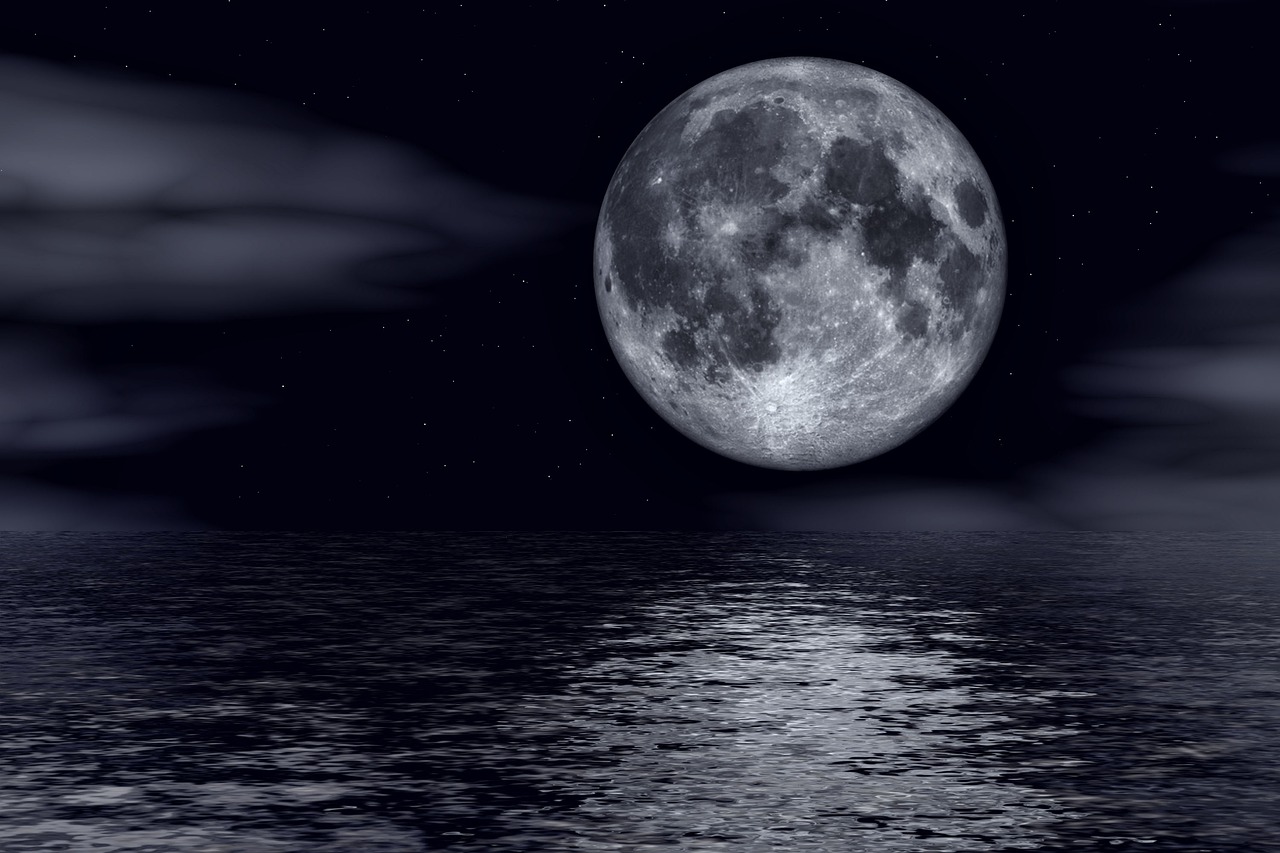
Legacy of Ancient Cosmologies
Ancient cosmologies, with their profound insights into the roles of the sun and moon, have left an indelible mark on human history and continue to shape our understanding of the universe. The legacy of these ancient beliefs transcends time, influencing various aspects of modern society and culture.
One of the most significant legacies of ancient cosmologies is their impact on modern astronomy. The meticulous observations and calculations made by ancient civilizations laid the foundation for the scientific study of celestial bodies. Today, astronomers still rely on the principles established by these early sky watchers to explore the mysteries of the cosmos.
Furthermore, the influence of ancient cosmologies extends to the realm of astrology. The intricate connections between the movements of the sun, moon, and planets were central to the development of astrological practices. Even in the present day, many people look to astrology for insights into their personalities and destinies.
Moreover, the spiritual practices inspired by ancient cosmologies continue to resonate with individuals seeking a deeper connection to the natural world. The reverence for the sun as a symbol of vitality and the moon as a source of intuition and mystery persists in various spiritual traditions around the globe.
Additionally, the architectural marvels constructed by ancient civilizations to align with celestial events serve as a testament to their advanced knowledge of astronomy and mathematics. The precise alignments of structures such as Stonehenge and the Pyramids of Giza highlight the intricate relationship between human creativity and cosmic harmony.
In conclusion, the legacy of ancient cosmologies reminds us of our enduring fascination with the sun and moon as celestial beings that transcend mere astronomical bodies. Their symbolic significance continues to inspire awe and wonder, connecting us to the timeless wisdom of our ancestors and the mysteries of the universe.
Frequently Asked Questions
- What was the significance of the sun and moon in ancient cosmologies?
In ancient cosmologies, the sun and moon held immense significance as celestial bodies that shaped cultural practices, religious rituals, and societal structures. The sun was often revered as a powerful deity symbolizing light, warmth, and life, while the moon was associated with fertility, cycles of life, and the divine feminine.
- How did ancient civilizations worship the sun?
Ancient civilizations such as the Egyptians and Aztecs worshipped the sun as a deity, attributing divine qualities to it and incorporating sun worship into their religious beliefs and practices. The sun was often seen as a source of power, renewal, and cosmic balance, influencing various aspects of daily life and rituals.
- What role did the moon play in ancient cultures?
The moon held symbolic importance in ancient cultures, representing cycles of time, fertility, and the mystical aspects of the night sky. It was often associated with the divine feminine, influencing mythologies, rituals, and spiritual beliefs across different civilizations.
- How did ancient civilizations track time using solar and lunar calendars?
Ancient civilizations developed solar and lunar calendars to track time, seasonal changes, and celestial events. These calendars played a crucial role in agricultural practices, religious festivals, and societal organization, reflecting the close connection between celestial observations and human activities.
- What is the concept of cosmic harmony in ancient cosmologies?
Ancient cosmologies often viewed the sun and moon as complementary forces representing cosmic harmony and balance. The sun symbolized light, order, and vitality, while the moon represented darkness, mystery, and renewal, reflecting the cyclical nature of existence and the interplay of opposing forces.


